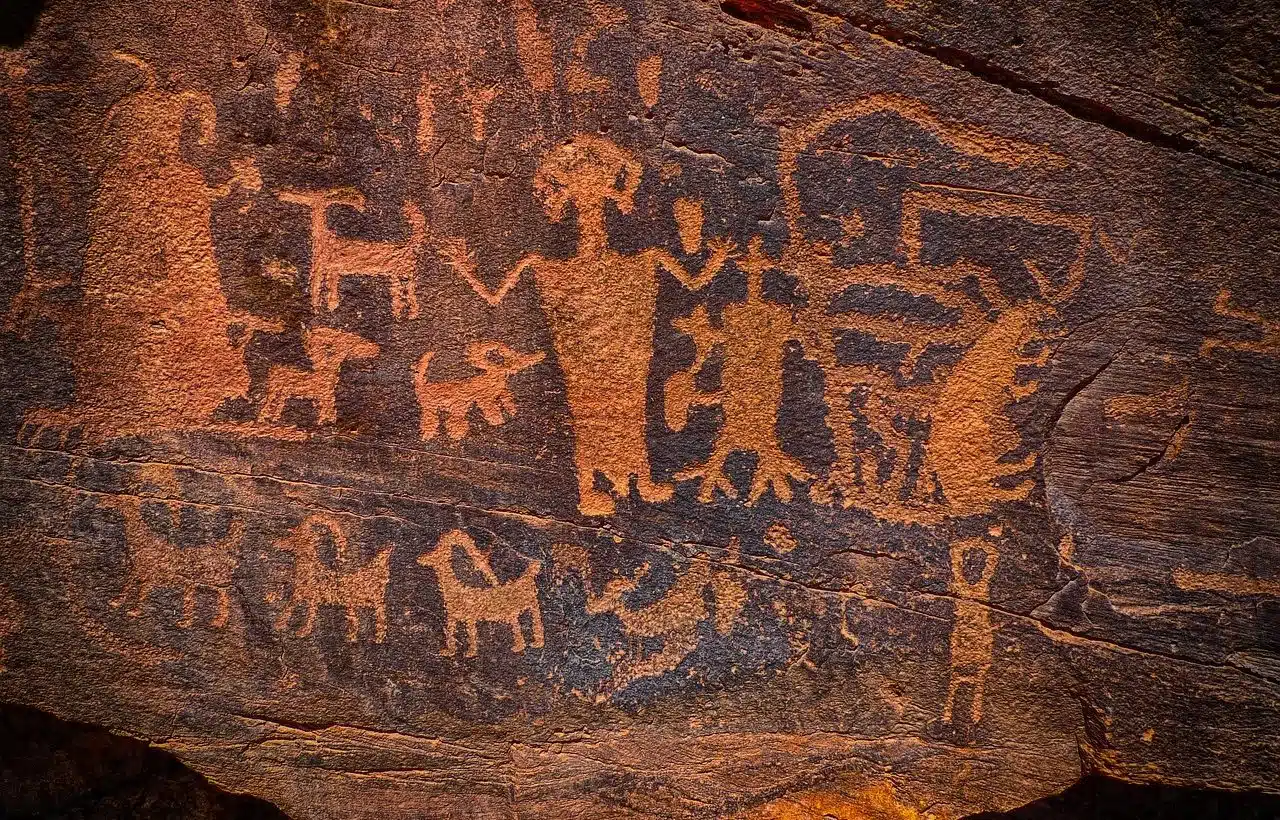
Petroglyphs are engravings made on stones.
Petroglyph is a word that has its etymological origin in Greek. Specifically, it means “engraved on rock” and is made up of two very different parts: the noun petra , which means “stone” ; and glyphos , which can be translated as “engraved.”
A petroglyph is an engraving that, in prehistory , was developed on stones . Primitive human beings, in this way, hit the rocks and chipped them to leave certain marks.
To develop a petroglyph, the person worked on the surface of the rock, lifting it little by little according to the design in question. For this, it could chip the material, subject it to abrasion or scratch it. Thanks to petroglyphs, prehistoric men could communicate and leave records on stones, which is why this technique is considered to be a distant antecedent of writing .
Types of petroglyphs
Petroglyphs are part of what is known as rock art . These images do not constitute a language nor do they imply a written message, unlike hieroglyphics , pictographs and other methods. What petroglyphs do is capture drawings that allow a scene to be displayed or tell, in a certain way, a story.
Specifically, it is considered that there are four large groups of petroglyphs:
- Geometric , where both circles and squares, crosses...
- Objects , in which really identifiable things are reflected such as bows, arrows, cars...
- Abstract , where what is represented is not clearly distinguished.
- Figurative . In this case, as its name indicates, figures appear, whether human or animal.

Petroglyphs are part of rock art.
Some examples
It is possible to find petroglyphs in various parts of the world. In Latin America , there are the Miculla petroglyphs , for example, which are found in Peruvian territory.
The Asian continent, for its part, is home to the petroglyphs of Wadi Rum ( Jordan ), which are among the most famous in the world. These engravings are located in an area that has been declared a World Heritage Site by UNESCO .
Spain, Sweden, Norway e Italy, entre otros, son países europeos con importantes petroglifos históricos, al igual que Cameroon, Libya, Gabon y Egypt en Africa. Como puede advertirse, la technique llegó a expandirse en todo el mundo.
Petroglyphs in Spain
In the specific case of Spain , one of the places with petroglyphs is called Laberintos de Mogor , in Galicia . Currently three of the seven large groups of engravings that existed are preserved and are a perfect example of what is called rock art. They are dated to the period between 3,000 and 2,000 BC. C.
However, in this country we must not forget the Aripe rock site in Tenerife, the Taganana petroglyphs , the Bentayga archaeological park , the Freixo petroglyphs and the Campo Lameiro archaeological park .
The term in literature
In the field of literature we also find books with the term in question. Thus, within the children's narrative is “Detective Owl 2: Operation Petroflifo” .
This story tells how Carla and some friends go on vacation to Galicia , to a camp in Los Ancares , where they will discover the mysteries of some engravings in the rock.
